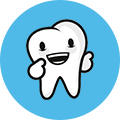Sedation Dentistry
Mighty Children’s Dentistry
Creating Mighty Smiles

Have you ever shuddered when you’re asked to go to the dentist? Would you prefer suffering a toothache than consult your dentist? Well, you wouldn’t be the first. Many people do not like the dentist’s office, so they’d rather stay without treatment.
For those who do not like the dentist or anything that relates to him or her, sedation dentistry may relieve them of some of their fears. Sedation can be applied in most medical procedures. Its usage depends on how fearful the patient is.
Introducing Sedation Dentistry
In sedation dentistry, dentists at Parkland, Florida, use medications are used to relax patients during dental procedures. The patient will be awake except he or she is under general anesthesia.
Different types of sedation are used by dentists at Mighty Children’s Dentistry, Coral Springs, Florida. These include:
Minimal sedation – the patient is very conscious of his or her environment but relaxed
Moderate sedation: This is characterized by slurring of speech and a vague memory of the dental procedure.
Deep sedation: The patient is almost unconscious but can still wake up
General anesthesia: The patient is totally unconscious
What Are The Types Of Sedation Used In Dentistry?
Mild sedation: In mild sedation, Dr Aurelio A Bula and his team will administer nitrous oxide (laughing gas). The gas is combined with oxygen and passed into your nose through a mask. The gas causes a relaxing effect. One advantage of mild sedation (nitrous oxide) is that the amount you receive can easily be controlled and so there is little risk of overdose. Also, the effect of nitrous oxide wears off quickly. Mild sedation is worth the name because you may even drive yourself home after the procedure.
Deep sedation (in-office IV sedation). The sedative will be administered intravenously. Intravenous administration means that its effect will be instant. With this method, our dentists can continually adjust the level.
General anesthesia: General anesthesia makes you partially or totally unconscious. As a matter of fact, you’ll be deeply asleep during the dental procedure. The effects of the medication will wear off on its own or may be reversed with another medication.
After sedating you, the dentist at Coral Springs, Florida will also administer some local anesthetic on the affected part of your mouth. This will relieve you of any pain that may occur during treatment.
Who Can Be Sedated By A Dentist?
People who are fearful or anxious about the dentist are qualified for sedation.
The following groups are qualified for sedation dentistry;
People who cannot sit still in the dentist’s chair
People who have a gag reflex
People with highly sensitive teeth
Those whose pain threshold is on the low side
People with a large dental defect and may, therefore, spend a large amount of time at the dentists’.
Children may be sedated if they are afraid of visiting the dentist. A sedative is also administered if they refuse to cooperate during the procedure. Nitrous oxide is safe for children and can be administered by any dentist.

Is Sedation Dentistry A Safe Procedure?
There’s a risk associated with every anesthetic procedure. However, it is risk-free and safe when administered by a qualified and well-trained dentist. If you have obstructive sleep apnea or are obese, you should talk to your dentist before you’re sedated. Such people may develop complications from the anesthesia.
You must ensure that your dentist is well-trained to administer your sedation. At Mighty Children’s Dentistry, Coral Springs, Florida, we have qualified dentists who can handle all aspects of sedation dentistry.
Make an Appointment Today! Our dental team headed by Dr. Aurelio A Bula is ready to put that smile you’ve always wanted on your face.
